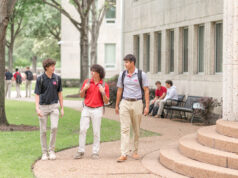
The landscape of education has undergone significant transformations in recent years, and one area that has witnessed remarkable change is school furnishings. Gone are the days of rigid, uniform desks and chairs neatly aligned in rows.
Today, schools are embracing flexible learning spaces that adapt to the diverse needs of modern learners. This article explores the evolution of school furnishings, from traditional desks to innovative designs that promote collaboration, creativity, and active learning.
The Traditional Classroom Setup
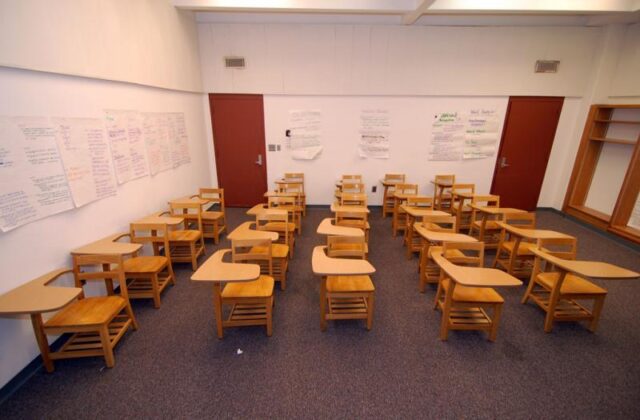
For much of the 20th century, the traditional classroom setup was the norm in educational institutions. Rows of fixed desks facing the teacher’s desk formed a structured learning environment. While this arrangement served its purpose in an era of teacher-centric instruction, it lacked the versatility needed to support varied teaching methods and engaged learning.
The Rise of Active Learning
As educational philosophies shifted towards active learning, a need arose for adaptable school furniture. Active learning emphasizes student engagement and interaction, encouraging learners to take an active role in the entire process. However, the traditional desk-and-chair setup was restrictive, limiting movement and collaborative opportunities. Schools started exploring alternatives to create more dynamic and student-centered spaces.
Flexibility and Mobility: The Key Drivers
The desire for flexible and mobile learning environments drove the transformation of school furnishings. Schools recognized that students have different learning styles and needs, and a one-size-fits-all approach was no longer sufficient. The focus shifted to creating spaces that could be easily reconfigured to accommodate various teaching methods and group sizes.
Versatile Seating Options
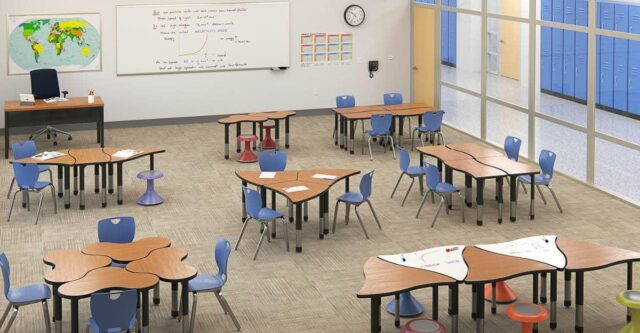
In recent years, versatile seating options have gained popularity in schools. Instead of standard desks, educators introduced seating options such as standing desks, stability balls, bean bags, and floor cushions. These alternatives promote movement, allowing students to switch between sitting, standing, or even lounging, enhancing comfort and focus.
Standing desks, for example, have been shown to reduce sedentary behavior and boost student energy levels, leading to increased engagement and concentration in class. Similarly, stability balls provide an outlet for fidgeting, promoting better focus and active participation.
Collaborative Learning Spaces
Collaboration has become a crucial skill in the modern workforce, and schools recognize the importance of fostering it from an early age. Collaborative learning spaces feature furniture designed for group work, such as large tables, modular seating arrangements, and whiteboards for brainstorming. These setups encourage students to collaborate, communicate, and learn from one another, enhancing critical thinking and problem-solving abilities.
Mobile Furniture for Dynamic Classrooms
Mobile furniture, including movable tables and chairs on wheels, has become a staple in flexible learning spaces. This furniture allows teachers to quickly adapt the classroom layout to suit the activity at hand, whether it’s a lecture, group discussion, or individual work. Teachers can effortlessly create collaborative pods, circles, or rows, promoting a more fluid and dynamic learning environment.
Tech-Integration in School Furnishings
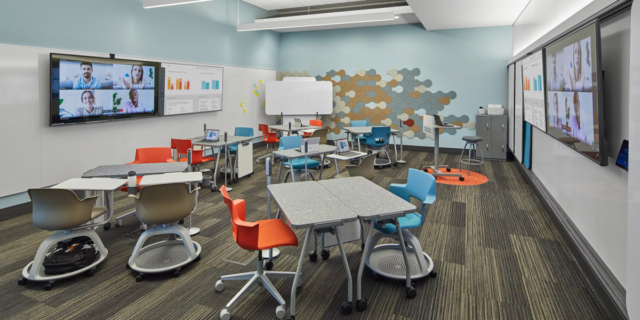
The integration of technology in education has also influenced school furnishings. Traditional desks and tables now feature built-in charging ports and cable management solutions, catering to the increasing use of laptops, tablets, and other electronic devices in the classroom. Additionally, some school furnishings are equipped with interactive surfaces and integrated displays, facilitating seamless integration of technology into lessons.
Creating Zones for Different Learning Styles
Flexible learning spaces often incorporate various zones to accommodate different styles and activities. Quiet zones, for instance, provide students with a peaceful environment for focused study or individual reading. On the other hand, active zones may include standing or mobile desks for more dynamic and interactive tasks. By offering diverse learning environments, schools cater to the unique preferences and needs of each student.
Student-Centered Design
Student-centered design is at the heart of modern school furnishings. The focus is on creating spaces that empower students, giving them agency over their learning experiences. By involving students in the design process or allowing them to rearrange furniture, schools promote a sense of ownership and responsibility in their education journey.
The Impact on Learning Outcomes
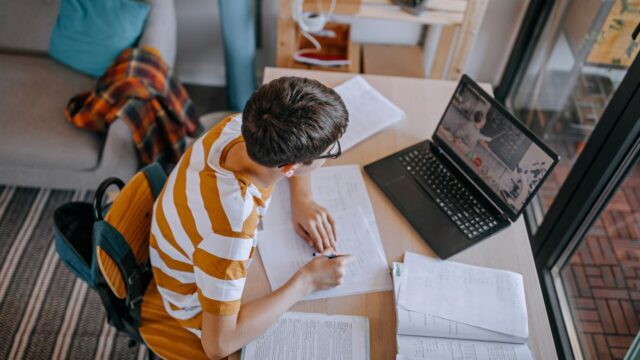
Numerous studies have explored the impact of flexible learning spaces on the education. Research indicates that these modern setups positively affect student engagement, collaboration, and creativity. Students in flexible learning spaces tend to be more motivated, participate actively in class discussions, and demonstrate improved problem-solving skills. Additionally, the ability to move and adjust seating arrangements contributes to better classroom behavior and reduced distractions.
Inclusivity and Accessibility
Modern school furnishings prioritize inclusivity and accessibility, ensuring that all students, regardless of their physical abilities, can comfortably participate in the learning process. Adjustable desks and chairs accommodate students of different heights, promoting ergonomic support for every learner. Schools are also incorporating features such as wheelchair-accessible tables and desks, making the learning environment more inclusive for students with mobility challenges. Inclusive school furnishings send a powerful message that every student is valued and deserves an equal opportunity to learn and thrive.
Adapting to COVID-19 and Beyond
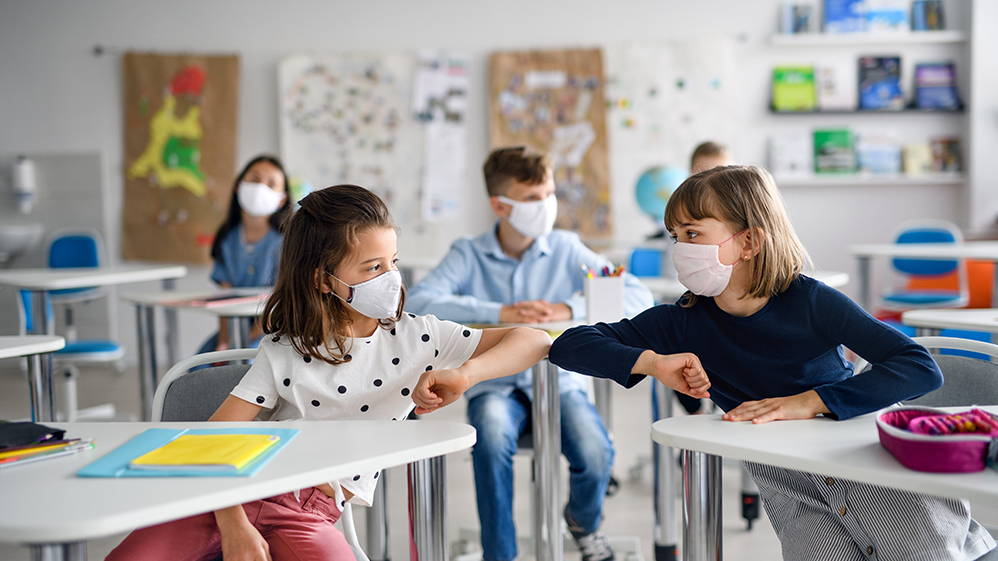
The COVID-19 pandemic accelerated the adoption of flexible learning spaces and technology integration in schools. With the need for physical distancing and hybrid learning models, schools had to quickly adapt their classroom layouts to ensure the safety of students and staff. Many institutions utilized modular and mobile furniture to create socially distant learning environments while maintaining opportunities for interaction and collaboration. The pandemic also highlighted the importance of technology in education, leading to the integration of digital tools into school furnishings to support remote learning and virtual collaboration. As schools move beyond the pandemic, the lessons learned from these adaptations will likely continue to shape the future of school furnishings and educational approaches.
The evolution of school furnishings from traditional desks to flexible learning spaces has revolutionized the educational experience for students. Emphasizing mobility, collaboration, and student-centered design, these modern furnishings create dynamic classrooms that empower learners to take an active role in their education. The incorporation of technology, inclusivity, and adaptability to changing circumstances showcases the commitment of educational institutions to providing students with environments that foster engagement, creativity, and academic success. As schools continue to embrace innovative approaches to education, the evolution of school furnishings will remain at the forefront of creating dynamic and inspiring learning spaces for generations to come.





